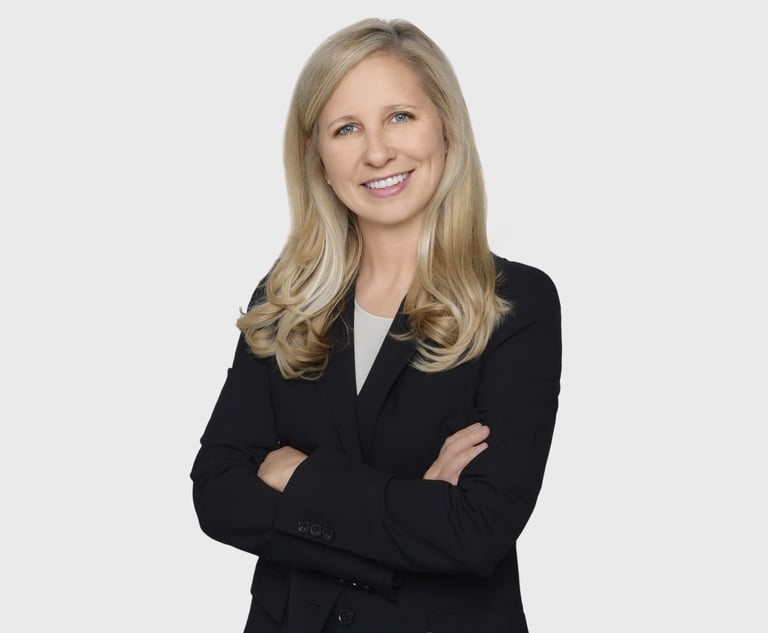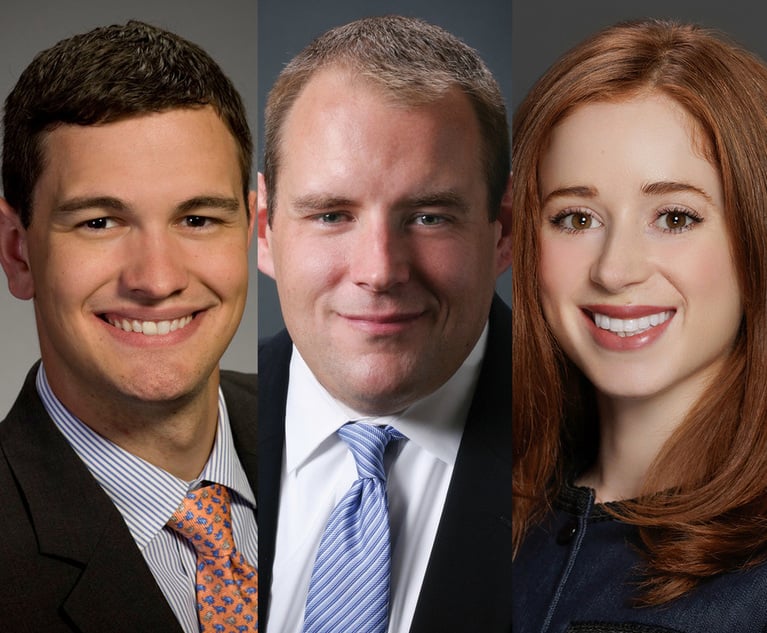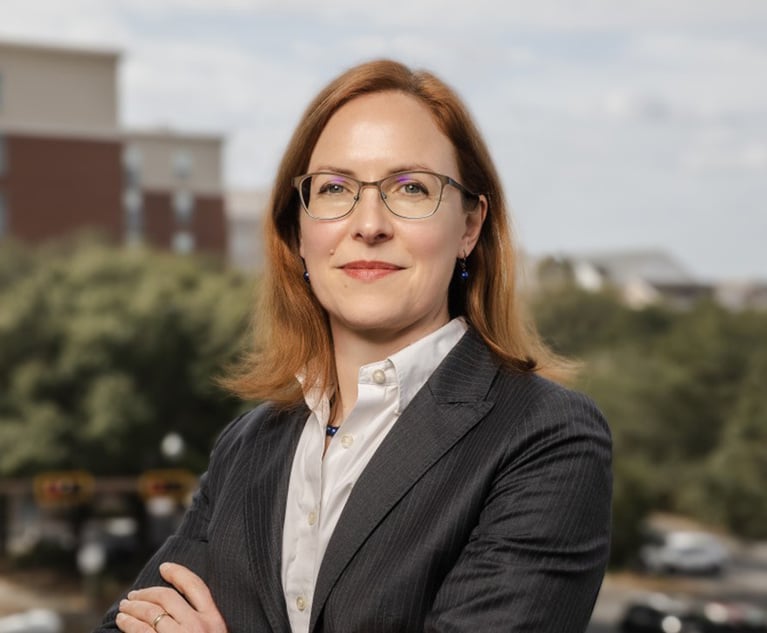Does Insurance Cover Business Losses Resulting From COVID-19?
Most businesses carry insurance for business interruption claims as part of the coverage they secured to protect their property. While courts have referred to these policies as "all-risk" policies, they are not without limitation.
March 31, 2020 at 09:37 AM
5 minute read
 Ronald Kammer, Hinshaw & Culbertson. Photo: J. Albert Diaz/ALM
Ronald Kammer, Hinshaw & Culbertson. Photo: J. Albert Diaz/ALM
Several lawsuits have already been filed seeking to recover losses caused by the loss of business from COVID-19. Many more are sure to follow. Most businesses carry insurance for business interruption claims as part of the coverage they secured to protect their property.
While courts have referred to these policies as "all-risk" policies, they are not without limitation. The typical policy provides that the insurer will pay for the actual loss of business income if it is caused by direct physical loss to property that is insured. The typical policy also contains protection when a business is closed by a civil authority.
In order to trigger coverage under civil authority coverage, the policyholder must show there was damage to property other than the insured location and that the civil authority precluded access to the insured property as a result of that damage and the action taken by the civil authority was in response to dangerous physical conditions resulting from that damage or to enable the civil authority to have unimpeded access to the damaged property.
Civil authority coverage typically provides coverage for only four consecutive weeks or when the policyholder's coverage ends; whichever is later. Significantly, for coverage to exist the policyholder will have the burden of proof to establish there was a direct physical loss to the building as opposed to the entry of a stay in place order to avoid the spread of COVID-19.
Florida courts have considered what is "direct physical loss" on many occasions. Although the term "physical" is not defined, it is not ambiguous. Florida courts have given that term its ordinary meaning and for coverage to exist, there must be a distinct, demonstrable, physical alteration of the property. Courts have typically held that a direct physical loss contemplates an actual change in the insured property requiring that repairs be made.
While the science surrounding COVID-19 is still evolving, policyholders seeking coverage may face an uphill battle establishing that the virus caused a distinct, demonstrable, physical alteration of the property, as opposed to a detrimental economic impact unaccompanied by such a loss to that property.
However, one thing is clear under the case law. The need to clean property in and of itself is not direct physical loss. In Mama Jo's v. Sparta Insurance, there was construction roadwork adjacent to the insured's restaurant for approximately 18 months. Mama Jo's submitted a business income claim to their insurer claiming that the construction debris caused damage to the insured's building, including but is not limited to, cleaning of the floors, walls, tables, chairs and countertops.
Sparta denied coverage and litigation ensued. In the context of a Daubert motion seeking to preclude testimony of the insured's expert that dust on the countertops resulted in direct physical loss of or damage to property, the court after striking the insured's expert next considered whether cleaning, in and of itself was a direct physical loss.
The court observed that cleaning is not considered direct physical loss even if the restaurant needed to be cleaned more frequently because there was no evidence that dust had any other impact on the building. Thus, just like in Mama Jo's, whether coverage exists for business losses caused by the COVID-19 pandemic may involve a scientific determination of whether the virus damaged the insured's property or nearby property.
Assuming policyholders are able to establish a direct physical loss, they will still have to overcome certain exclusions in their policies. However, the burden of establishing if these exclusions preclude coverage, will be on the insurer and not the policyholder. In a COVID-19 pandemic there are at least three exclusions that may come into play.
The first is the fungi and bacteria exclusion. Since COVID-19 is a virus and not bacteria, this exclusion may not apply. The next exclusion is the pollution exclusion. Most pollution exclusions define the term pollutant broadly to include any irritant or contaminant. Relying on that definition the court in Nova Casualty v. Waserstein, found that living organisms, microbial populations, microbial contaminants and indoor allergens fit the ordinary definition of a contaminant precluding coverage for Waserstein's claim predicated upon the failure to keep the air and surfaces in a building clean.
The final exclusion is the loss due to virus or bacteria which typically precludes coverage for any loss caused by or resulting from any virus that induces or is capable or inducing physical distress, illness or disease. Certainly COVID-19 is a virus. This exclusion, in the first party context has not been heavily litigated, however the court in Koegler v. Liberty Mutual enforced a similar exclusion involving the transmission of the herpes virus.
This debate may become moot. Recognizing the burden policyholders face, three states are now advancing legislation to provide business interruption coverage despite these policy provisions. There are additional efforts at the national level. More such efforts are sure to follow. Whether the insurance industry will be forced to pay for COVID-19 claims they feel are not covered, and for which no premium was paid, remains to be seen.
Ronald L. Kammer is a Miami partner and the co-national practice leader of Hinshaw & Culbertson's insurance services practice group. Contact him at [email protected].
This content has been archived. It is available through our partners, LexisNexis® and Bloomberg Law.
To view this content, please continue to their sites.
Not a Lexis Subscriber?
Subscribe Now
Not a Bloomberg Law Subscriber?
Subscribe Now
NOT FOR REPRINT
© 2025 ALM Global, LLC, All Rights Reserved. Request academic re-use from www.copyright.com. All other uses, submit a request to [email protected]. For more information visit Asset & Logo Licensing.
You Might Like
View All
Leveraging the Power of Local Chambers of Commerce: A Second-Career Lawyer’s Guide to Building a Thriving Practice
5 minute read
CFPB Proposes Rule to Regulate Data Brokers Selling Sensitive Information
5 minute read
Essential Labor Shifts: Navigating Noncompetes, Workplace Politics and the AI Revolution

Initial Steps to Set Up a Fla. Appeal: Your Future Self (or Appellate Attorney) Will Thank You
6 minute readLaw Firms Mentioned
Trending Stories
- 1Family Court 2024 Roundup: Part I
- 2In-House Lawyers Are Focused on Employment and Cybersecurity Disputes, But Looking Out for Conflict Over AI
- 3A Simple 'Trial Lawyer' Goes to the Supreme Court
- 4Clifford Chance Adds Skadden Rainmaker in London
- 5Latham, Kirkland and Paul Weiss Climb UK M&A Rankings
Who Got The Work
J. Brugh Lower of Gibbons has entered an appearance for industrial equipment supplier Devco Corporation in a pending trademark infringement lawsuit. The suit, accusing the defendant of selling knock-off Graco products, was filed Dec. 18 in New Jersey District Court by Rivkin Radler on behalf of Graco Inc. and Graco Minnesota. The case, assigned to U.S. District Judge Zahid N. Quraishi, is 3:24-cv-11294, Graco Inc. et al v. Devco Corporation.
Who Got The Work
Rebecca Maller-Stein and Kent A. Yalowitz of Arnold & Porter Kaye Scholer have entered their appearances for Hanaco Venture Capital and its executives, Lior Prosor and David Frankel, in a pending securities lawsuit. The action, filed on Dec. 24 in New York Southern District Court by Zell, Aron & Co. on behalf of Goldeneye Advisors, accuses the defendants of negligently and fraudulently managing the plaintiff's $1 million investment. The case, assigned to U.S. District Judge Vernon S. Broderick, is 1:24-cv-09918, Goldeneye Advisors, LLC v. Hanaco Venture Capital, Ltd. et al.
Who Got The Work
Attorneys from A&O Shearman has stepped in as defense counsel for Toronto-Dominion Bank and other defendants in a pending securities class action. The suit, filed Dec. 11 in New York Southern District Court by Bleichmar Fonti & Auld, accuses the defendants of concealing the bank's 'pervasive' deficiencies in regards to its compliance with the Bank Secrecy Act and the quality of its anti-money laundering controls. The case, assigned to U.S. District Judge Arun Subramanian, is 1:24-cv-09445, Gonzalez v. The Toronto-Dominion Bank et al.
Who Got The Work
Crown Castle International, a Pennsylvania company providing shared communications infrastructure, has turned to Luke D. Wolf of Gordon Rees Scully Mansukhani to fend off a pending breach-of-contract lawsuit. The court action, filed Nov. 25 in Michigan Eastern District Court by Hooper Hathaway PC on behalf of The Town Residences LLC, accuses Crown Castle of failing to transfer approximately $30,000 in utility payments from T-Mobile in breach of a roof-top lease and assignment agreement. The case, assigned to U.S. District Judge Susan K. Declercq, is 2:24-cv-13131, The Town Residences LLC v. T-Mobile US, Inc. et al.
Who Got The Work
Wilfred P. Coronato and Daniel M. Schwartz of McCarter & English have stepped in as defense counsel to Electrolux Home Products Inc. in a pending product liability lawsuit. The court action, filed Nov. 26 in New York Eastern District Court by Poulos Lopiccolo PC and Nagel Rice LLP on behalf of David Stern, alleges that the defendant's refrigerators’ drawers and shelving repeatedly break and fall apart within months after purchase. The case, assigned to U.S. District Judge Joan M. Azrack, is 2:24-cv-08204, Stern v. Electrolux Home Products, Inc.
Featured Firms
Law Offices of Gary Martin Hays & Associates, P.C.
(470) 294-1674
Law Offices of Mark E. Salomone
(857) 444-6468
Smith & Hassler
(713) 739-1250






